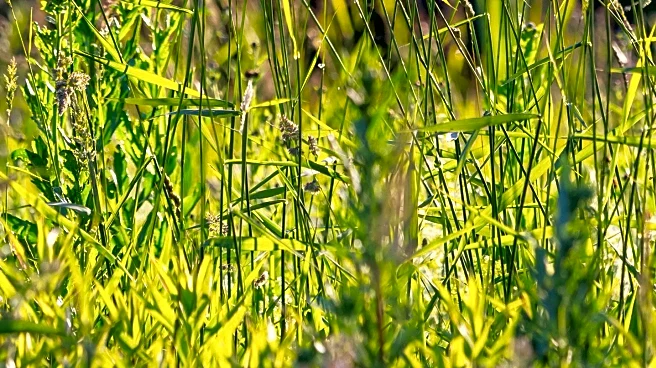What is the story about?
What's Happening?
A recent study conducted in Southern Thailand has revealed significant findings regarding the incidence of nonmelanoma skin cancer (NMSC) in the region. The research focused on the Songkhla Province, where the incidence rates of NMSC, particularly squamous cell carcinoma (SCC), have shown a decrease in certain areas. The study attributes this decline to the unique environmental conditions, such as the presence of rubber plantations that provide shade and reduce ultraviolet radiation (UVR) exposure. The working patterns in these plantations, which occur predominantly at night, further minimize UVR exposure. The study also noted that the incidence rates of NMSC in urban areas are decreasing, potentially due to increased sunblock usage. The research utilized data from the Songkhla Cancer Registry, covering the period from 1989 to the present, and projected stable trends in NMSC incidence up to 2030.
Why It's Important?
The findings of this study are significant as they highlight the impact of environmental factors and occupational patterns on skin cancer incidence. The reduction in UVR exposure due to natural shading and night-time work schedules in rubber plantations offers insights into effective strategies for skin cancer prevention. This research underscores the importance of understanding local environmental and cultural factors in disease prevention and public health planning. The study's projections of stable NMSC trends up to 2030 provide valuable information for healthcare providers and policymakers in developing targeted prevention strategies and improving access to public health services.
What's Next?
The study suggests that continued monitoring and analysis of NMSC incidence in Southern Thailand are necessary to refine prevention strategies further. Healthcare providers may focus on increasing awareness about UVR exposure risks and promoting protective measures such as sunscreen use. Policymakers could consider implementing public health initiatives that leverage the study's findings, particularly in areas with high UVR exposure. Additionally, the study's insights could inform similar research in other regions with comparable environmental conditions, potentially leading to broader applications of these prevention strategies.
Beyond the Headlines
The study's findings also raise questions about the broader implications of occupational health and safety in agricultural settings. The unique working conditions in rubber plantations, which mitigate UVR exposure, could serve as a model for other industries seeking to reduce environmental health risks. Furthermore, the study highlights the importance of cultural and demographic factors in health research, as the diverse population in Songkhla Province presents unique challenges and opportunities for public health interventions.
AI Generated Content
Do you find this article useful?












